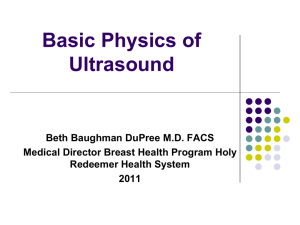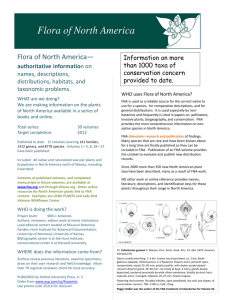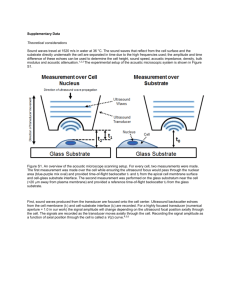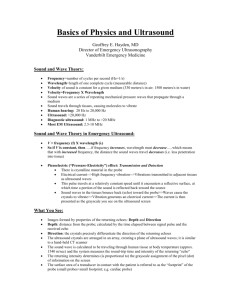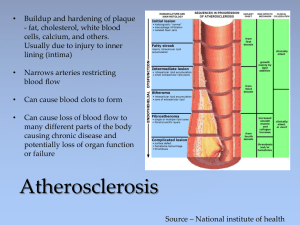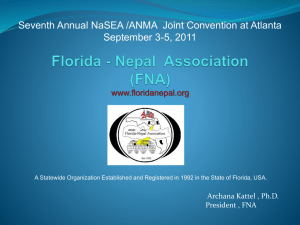Introduction to Ultrasound
advertisement
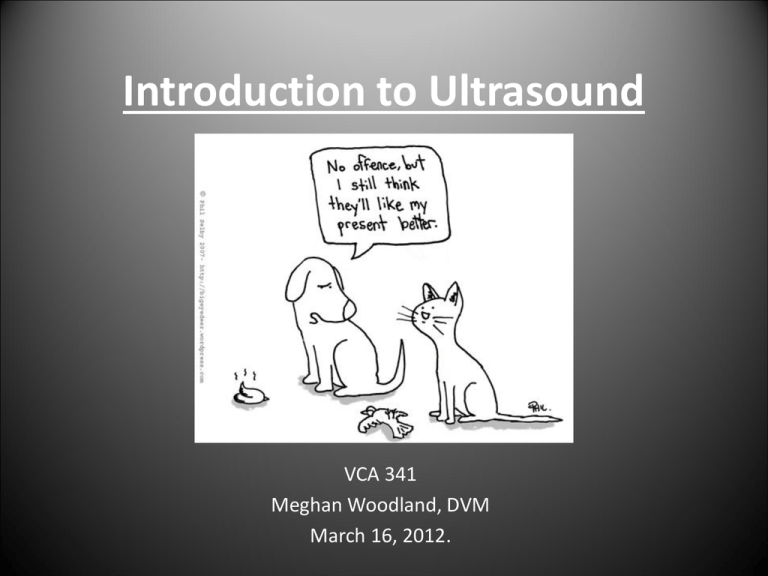
Introduction to Ultrasound VCA 341 Meghan Woodland, DVM March 16, 2012. Indications • As a compliment to abdominal radiographs – To rule in/out intestinal obstruction (foreign body) – To determine the origin of an abdominal mass • Spleen, Liver – To facilitate fine needle aspiration/cystocentesis – To evaluate organ parenchyma – To assess fetal viability in pregnant animals – ***If clinical signs or history indicate abdominal ultrasound, then it should be performed even if radiographs are normal!!! Pitfalls of Ultrasound • Ultrasound cannot penetrate air or bone – May be difficult to assess the GI tract in animals with aerophagia – Size of organs is largely subjective • Except renal size in cats – Unable to evaluate extra-abdominal structures • May still need to perform abdominal radiographs – Cost – User dependent results Why do you need both? • Examples – Prostatic adenocarcinoma seen on ultrasound • Has it spread to the lumbar vertebrae? – Coughing patient with mitral regurgitation on echocardiogram • Does the patient have pulmonary edema? – Enlarged liver on radiographs • Can get a guided FNA with ultrasound Examples • Prostate Abnormal Normal (Neutered Dog) Need radiographs to properly evaluate the spine for metastasis Ultrasound Physics • Characterized by sound waves of high frequency – Higher than the range of human hearing • Sound waves are measured in Hertz (Hz) – Diagnostic U/S = 1-20 MHz • Sound waves are produced by a transducer Ultrasound Physics • Transducer (AKA: probe) – Piezoelectric crystal • Emit sound after electric charge applied • Sound reflected from patient • Returning echo is converted to electric signal grayscale image on monitor • Echo may be reflected, transmitted or refracted • Transmit 1% and receive 99% of the time Attenuation • Absorption = energy is captured by the tissue then converted to heat • Reflection = occurs at interfaces between tissues of different acoustic properties • Scattering = beam hits irregular interface – beam gets scattered Acoustic Impedance • The product of the tissue’s density and the sound velocity within the tissue • Amplitude of returning echo is proportional to the difference in acoustic impedance between the two tissues • Velocities: – Soft tissues = 1400-1600m/sec – Bone = 4080 – Air = 330 • Thus, when an ultrasound beam encounters two regions of very different acoustic impedances, the beam is reflected or absorbed – Cannot penetrate – Example: soft tissue – bone interface Frequency and Resolution • As frequency increases, resolution improves • As frequency increases, depth of penetration decreases – Use higher frequency transducers to image more superficial structures • Ex: Equine Tendons Frequency Penetration Instrumentation - Ultrasound Probes A B C B A C Transducers/Probes • Sector scanner – Fan-shaped beam – Small surface required for contact – Cardiac imaging • Linear scanner – Rectanglular beam – Large contact area required • Curvi-linear scanner – Smaller scan head – Wider field of view Monitor and Computer • Converts signal to an image/ archive • Tools for image manipulation – Gain – amplification of returning echoes • Overall brightness – Time gain compensation (curve) • Adjust brightness at different depths – Freeze – Depth • Zoom in for superficial view • Zoom out for wide view • Depth limited by frequency – Focal zone • Optimal resolution wherever focal zone is Image controls Modes of Display • A mode – Spikes – where precise length and depth measurements are needed – ophtho • B mode (brightness) – used most often – 2 D reconstruction of the image slice • M mode – motion mode – Moving 1D image – cardiac mainly Artifacts • Artifacts lead to the improper display of the structures to be imaged – Affect the quality of images • Improper machine settings – gain – Image too bright or too dark – Can disguise underlying pathology Artifacts • Reverberation – Time delays due to travel of echoes when there are 2 or more reflectors in the sound path – Mirror image – liver, diaphragm and GB • Return of echoes to transducer takes longer because reflected from diaphragm • A second image of the structure is placed deeper than it really is – Comet tail – gas bubble – Ring down – skin transducer surface Mirror Image Artifact Dr. Matthews Dr. Matthews Comet Tails Reverberation www.upei.ca/~vetrad What Happened Here? Artifacts • Acoustic shadowing – U/S beam does not pass through an object because of reflection or absorption – Black area beyond the surface of the reflector – Examples: cystic calculi, bones • Acoustic enhancement – Hyperintense (bright) regions below objects of low U/S beam attenuation – AKA Through transmission – Examples: cyst or urinary bladder Acoustic Shadowing Acoustic Enhancement Acoustic Enhancement Artifacts • Refraction: – Occurs when the sound wave reaches two tissues of differing acoustic impedances – U/S beam reaching the second tissue changes direction – May cause an organ to be improperly displayed What type of artifact is this? Ultrasound Terminology • Never use dense, opaque, lucent • Anechoic – No returning echoes= black (acellular fluid) • Echogenic – Regarding fluid--some shade of grey d/t returning echoes • Relative terms – Comparison to normal echogenicity of the same organ or other structure – Hypoechoic, isoechoic, hyperechoic • Spleen should be hyperechoic to liver • Liver is hyperechoic to kidneys Patient Positioning and Preparation • • • • Dorsal recumbency Lateral recumbency Standing Clip hair – Be sure to check with owners • Apply ultrasound gel • Alcohol can be used – esp. in horses Image Orientation and Labeling • • • • Must be consistent Symbol on screen ~ dot on transducer “dot” to head and “dot” to patients right “dot” lateral for transverse and proximal for longitudinal images • Label images carefully – Organ – Patient’s name – Date of examination Ultrasound-Guided FNA/ Biopsies • NORMAL ABD U/S FINDINGS DO NOT MEAN ORGANS ARE NORMAL!!! – ***Do FNA if suspect disease • Abnormal U/S findings nonspecific – Benign and malignant masses identical – Bright liver may be secondary to Cushing’s dz or lymphoma • Aspirate abnormal structures (with few exceptions)!!! – Obtain owner approval prior to exam – Warn owner of risks – +/- Clotting profile Ultrasound-Guided FNA/ Biopsies • Risks of FNA’s – Fatal hemorrhage – Pneumothorax w/ pulmonary masses – Seeding of tumors • TCC – Sepsis • Abscesses Ultrasound-Guided FNA/ Biopsies • Routinely aspirate: – – – – – – Liver (masses and diffuse disease) Spleen (nodules and diffuse disease) Gastrointestinal masses Enlarged lymph nodes Enlarged prostate Pulmonary/ mediastinal masses (usually don’t biopsy due to risk of pneumothorax • Occasionally aspirate: – Kidneys (esp. if enlarged) – Pancreas – Urinary bladder masses • Never aspirate: – Adrenal glands – Gall bladder Ultrasound-Guided FNA/Biopsies • Non-aspiration Technique – – – – 22g 1.5in needle 6 cc syringe Short jabs into organ Spray onto slide, smear, and check abdomen for hemorrhage Ultrasound-Guided FNA • Aspiration technique – Same set up as with non-aspiration technique – With needle in structure, pull back plunger vigorously several times – Remove needle, fill syringe with air – Spray onto slide and smear Ultrasound-Guided Core Biopsies • Use a special biopsy “gun” – 14-20g – Insert through small skin incision • Much more representative sample – Tissue not just cells – Sometimes it is necessary to get the answer – But…. MUCH MORE LIKELY TO BLEED! Biopsy – Bleeding??? Catheter in Bladder Summary • Know your limitations – Lack of expertise – $15,000 vs. $150,000 machine • For abdomen or thorax, do radiographs first • If safe and reasonable, do FNA’s of all suspected abnormal structures based on history, clinical signs, or the ultrasound examination – Abnormal structures can look normal – Of the structures that do look abnormal, benign and malignant processes can be identical • Documentation – save images in some fashion The End
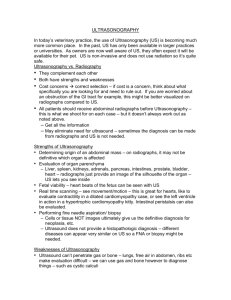
![Jiye Jin-2014[1].3.17](http://s2.studylib.net/store/data/005485437_1-38483f116d2f44a767f9ba4fa894c894-300x300.png)
